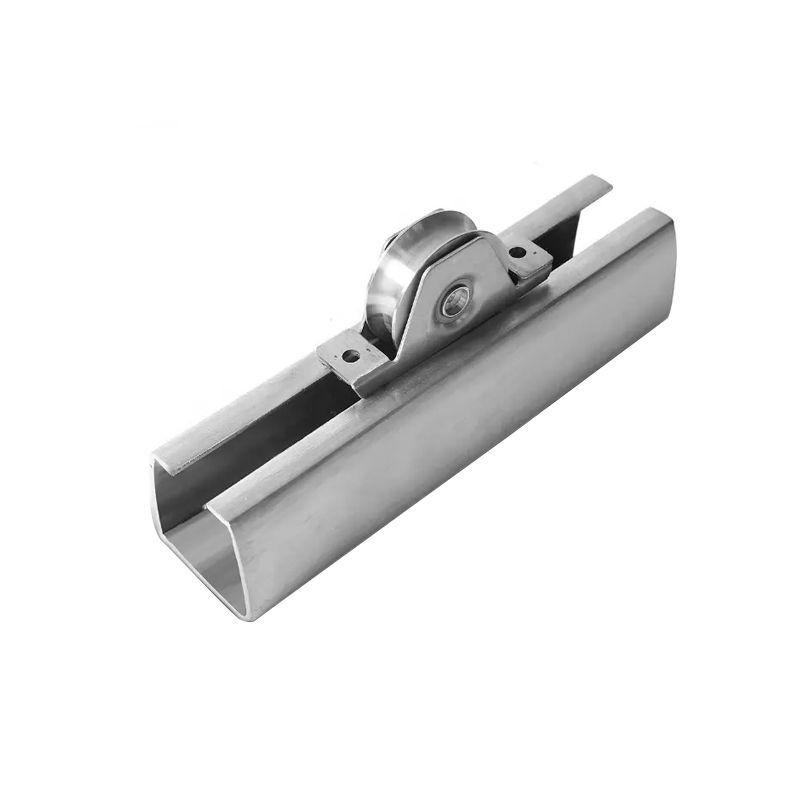No. 200 Gaoxin RD, Shanghua St, Lanxi, Zhejiang, P. R China
The CNC (Computer Numerical Control) machine tools are widely used in ...
See DetailsThe development of sliding gate roller tracks reflects a broader trend in material engineering—one that prioritizes not only strength and durability but also ease of use, resistance to environmental conditions, and long-term performance. Early designs of sliding gate roller tracks primarily utilized iron due to its accessibility and high compressive strength. However, while iron tracks performed adequately under load-bearing conditions, they also presented limitations in terms of weight, corrosion resistance, and maintenance demands.

Iron tracks were susceptible to rusting, particularly in outdoor applications where exposure to moisture and changing weather conditions was inevitable. This led to frequent upkeep, including the need for protective coatings, regular repainting, and rust removal. Additionally, the substantial weight of iron made handling and installation more labor-intensive, raising overall construction costs and limiting design flexibility.
As material sciences progressed, steel and eventually aluminum became preferred choices for sliding gate roller tracks. Steel, especially when galvanized or stainless, addressed many of iron's corrosion issues, but aluminum provided a step further in terms of weight reduction and resistance to oxidation. Aluminum does not rust, is significantly lighter, and offers sufficient structural integrity for residential and commercial gate systems.
The shift to aluminum was further motivated by the growing demand for smoother, quieter gate operation. Aluminum tracks are compatible with a range of wheel materials, including rubber and nylon, contributing to a quieter, low-friction gate movement. Moreover, aluminum is easier to machine, allowing for more precise profiles and customized lengths.
Aluminum heavy duty sliding gate tracks are more than just structural elements—they play a proactive role in reducing long-term gate maintenance and improving the operational reliability of sliding systems. These tracks serve as the foundation for gate movement, guiding the rollers with minimal resistance while withstanding environmental and mechanical stress. Their influence on maintenance routines is significant due to their material characteristics and design efficiency.
One of the critical maintenance advantages of aluminum tracks lies in their resistance to corrosion. Unlike iron or untreated steel, aluminum naturally forms a protective oxide layer that prevents rust, even in wet or coastal environments. This reduces the need for regular anti-rust treatments and prolongs the life of both the track and associated components like rollers and bearings. The result is less frequent inspection and a lower likelihood of unexpected system failures due to track degradation.
Additionally, aluminum tracks contribute to reduced wear on gate rollers. The smoothness of the aluminum surface, especially when anodized or extruded with high precision, minimizes friction during gate movement. This not only enhances operational efficiency but also reduces mechanical strain on rollers and motors in automated systems. With less friction and wear, maintenance cycles for roller replacement and lubrication can be extended, saving both time and cost.
Another aspect of aluminum heavy duty sliding gate tracks that benefits maintenance is ease of cleaning. Dust, debris, and small obstructions that commonly accumulate in outdoor installations can be easily removed from the open, lightweight track design. In some models, tracks are even designed with built-in drainage channels to prevent water pooling and mud buildup, further ensuring smooth performance with minimal cleaning effort.
Lastly, aluminum tracks are easier to realign or replace if structural shifts occur, such as soil movement or changes in gate weight. Their relatively low weight makes them manageable during maintenance tasks, allowing quicker intervention when necessary.